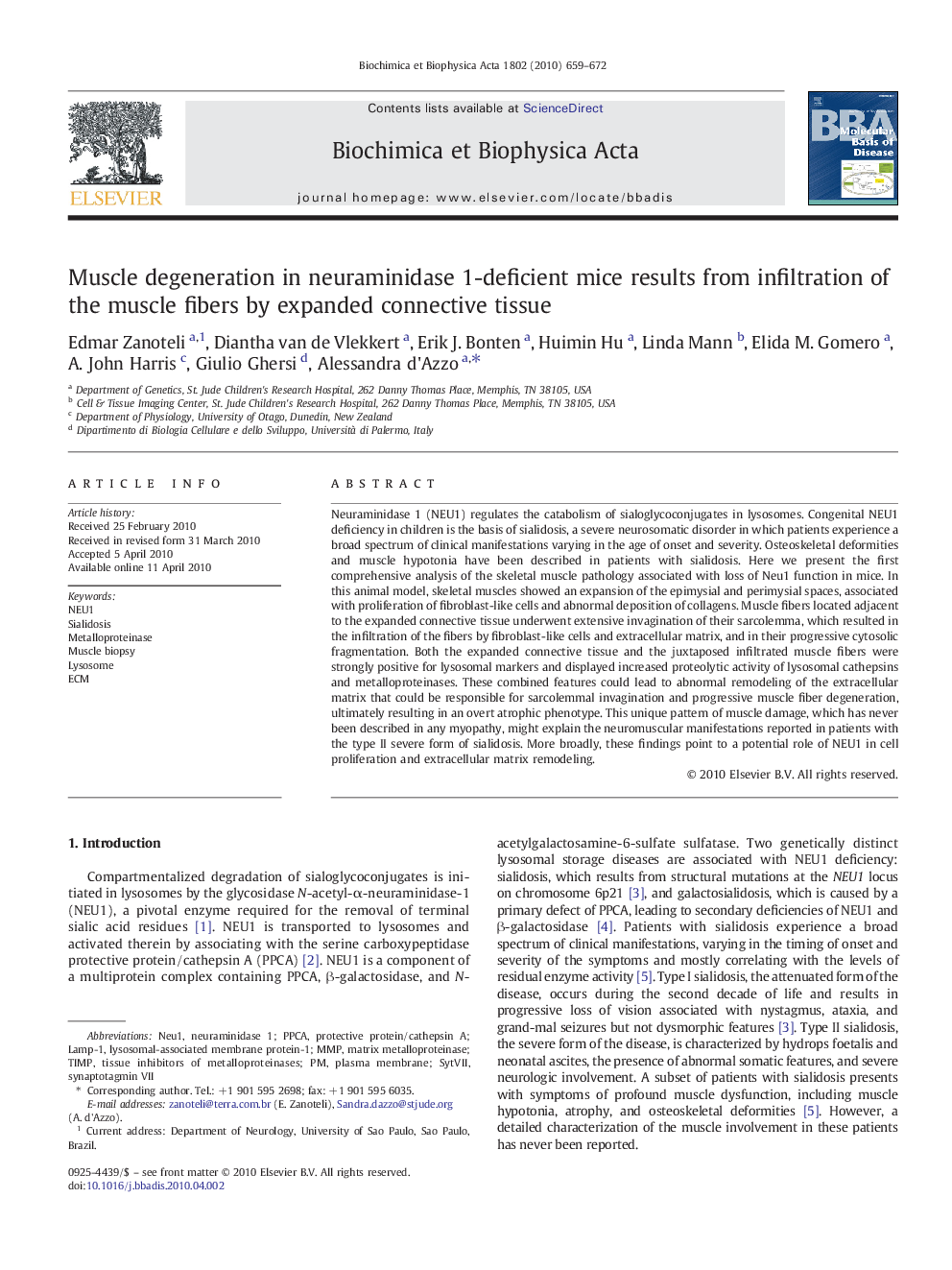| کد مقاله | کد نشریه | سال انتشار | مقاله انگلیسی | نسخه تمام متن |
|---|---|---|---|---|
| 1905301 | 1534705 | 2010 | 14 صفحه PDF | دانلود رایگان |
عنوان انگلیسی مقاله ISI
Muscle degeneration in neuraminidase 1-deficient mice results from infiltration of the muscle fibers by expanded connective tissue
دانلود مقاله + سفارش ترجمه
دانلود مقاله ISI انگلیسی
رایگان برای ایرانیان
کلمات کلیدی
ECMMMPNeu1Protective protein/cathepsin ASynaptotagmin VIIpPCA - PPCAMuscle biopsy - بیوپسی عضلانیTIMP - زمانSialidosis - سیلیدوزPlasma membrane - غشای پلاسماLAMP-1 - لامپ 1Lysosome - لیزوزومmatrix metalloproteinase - ماتریکس متالوپروتئینازMetalloproteinase - متالوپروتئیناز Tissue inhibitors of metalloproteinases - مهارکننده های متالوپروتئیناز بافتlysosomal-associated membrane protein-1 - پروتئین غشای مرتبط با لیزوزوم 1
موضوعات مرتبط
علوم زیستی و بیوفناوری
بیوشیمی، ژنتیک و زیست شناسی مولکولی
سالمندی
پیش نمایش صفحه اول مقاله

چکیده انگلیسی
Neuraminidase 1 (NEU1) regulates the catabolism of sialoglycoconjugates in lysosomes. Congenital NEU1 deficiency in children is the basis of sialidosis, a severe neurosomatic disorder in which patients experience a broad spectrum of clinical manifestations varying in the age of onset and severity. Osteoskeletal deformities and muscle hypotonia have been described in patients with sialidosis. Here we present the first comprehensive analysis of the skeletal muscle pathology associated with loss of Neu1 function in mice. In this animal model, skeletal muscles showed an expansion of the epimysial and perimysial spaces, associated with proliferation of fibroblast-like cells and abnormal deposition of collagens. Muscle fibers located adjacent to the expanded connective tissue underwent extensive invagination of their sarcolemma, which resulted in the infiltration of the fibers by fibroblast-like cells and extracellular matrix, and in their progressive cytosolic fragmentation. Both the expanded connective tissue and the juxtaposed infiltrated muscle fibers were strongly positive for lysosomal markers and displayed increased proteolytic activity of lysosomal cathepsins and metalloproteinases. These combined features could lead to abnormal remodeling of the extracellular matrix that could be responsible for sarcolemmal invagination and progressive muscle fiber degeneration, ultimately resulting in an overt atrophic phenotype. This unique pattern of muscle damage, which has never been described in any myopathy, might explain the neuromuscular manifestations reported in patients with the type II severe form of sialidosis. More broadly, these findings point to a potential role of NEU1 in cell proliferation and extracellular matrix remodeling.
ناشر
Database: Elsevier - ScienceDirect (ساینس دایرکت)
Journal: Biochimica et Biophysica Acta (BBA) - Molecular Basis of Disease - Volume 1802, Issues 7â8, JulyâAugust 2010, Pages 659-672
Journal: Biochimica et Biophysica Acta (BBA) - Molecular Basis of Disease - Volume 1802, Issues 7â8, JulyâAugust 2010, Pages 659-672
نویسندگان
Edmar Zanoteli, Diantha van de Vlekkert, Erik J. Bonten, Huimin Hu, Linda Mann, Elida M. Gomero, A. John Harris, Giulio Ghersi, Alessandra d'Azzo,